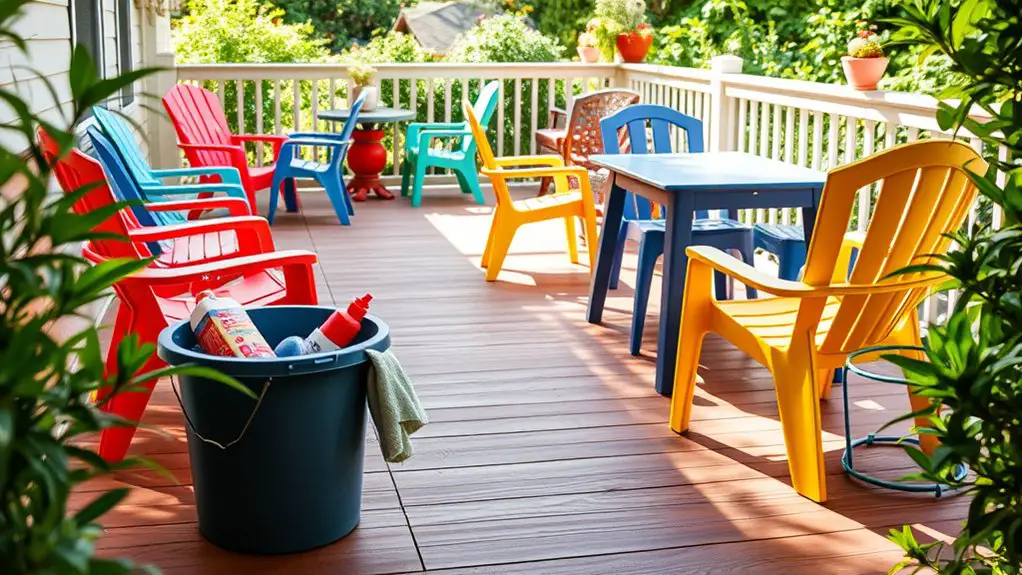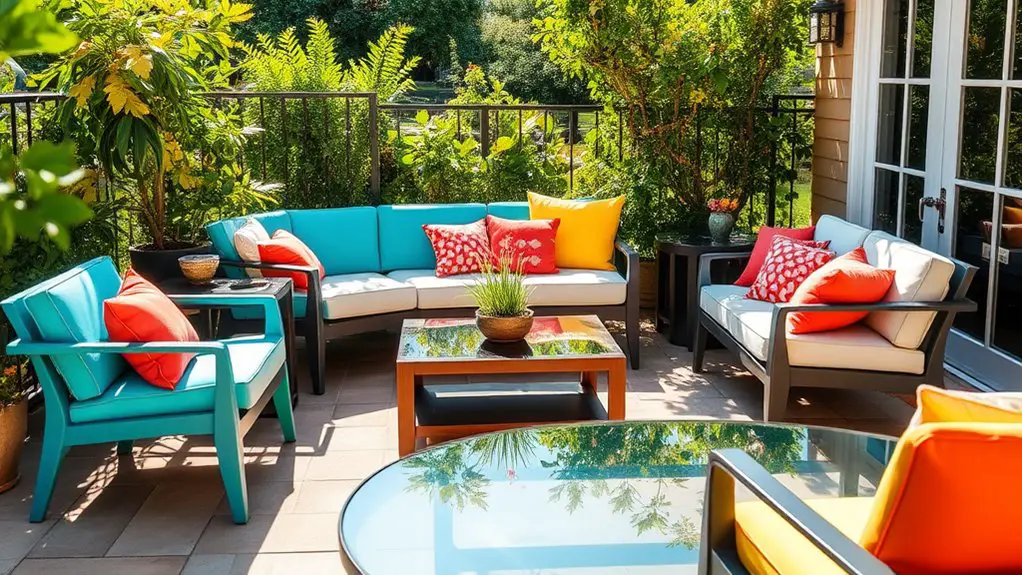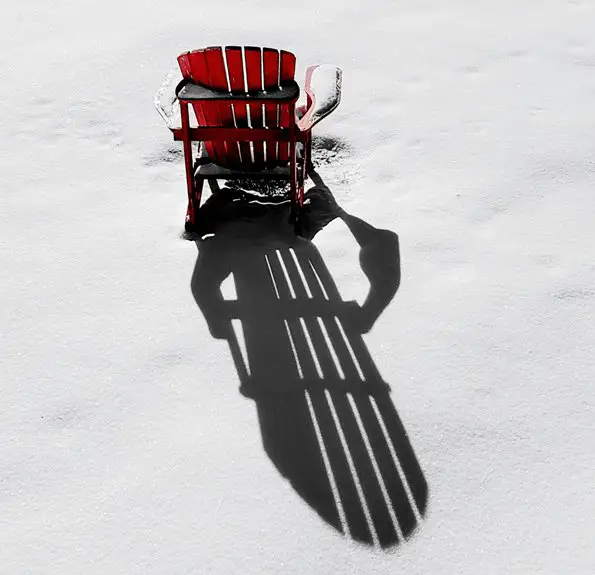When selecting outdoor plastic furniture, start by understanding the materials. HDPE is durable and eco-friendly, while polypropylene is lightweight and weather-resistant. Pay attention to the lifespan; good-quality furniture can last over 50 years. Regular maintenance, like cleaning with mild soap, helps extend its life. Consider sustainability too; choosing recycled options supports a healthier planet. Lastly, think about aesthetics. Modern styles or classic wood-like designs can enhance your outdoor space. With so many choices, you'll find the perfect fit for your needs. There's more to explore about these options and their benefits.
Key Takeaways
- Choose materials like HDPE for durability and sustainability, ensuring long-lasting outdoor furniture.
- Consider weather resistance; look for furniture that withstands UV rays, moisture, and strong winds.
- Prioritize low maintenance options; regular cleaning with mild soap helps maintain appearance and longevity.
- Explore various designs; select styles that match your aesthetic preferences, from modern to classic looks.
- Opt for furniture made from recycled plastics to support sustainability and reduce environmental impact.
Types of Plastic Materials
When it comes to outdoor plastic furniture, there are four main types of plastic materials you should know about: High-Density Polyethylene (HDPE), Polypropylene (PP), Polyvinyl Chloride (PVC), and Polycarbonate (PC).
HDPE is made from post-consumer plastic waste, making it a sustainable choice. It's known for its strength and durability, ideal for outdoor settings. You'll appreciate that it resists fading, cracking, and warping, requiring little maintenance while being lighter than wood or metal. Additionally, it is resistant to mold, mildew, and insects, ensuring a longer lifespan in outdoor environments. It's often used to create eco-friendly furniture that can withstand harsh weather conditions.
Polypropylene is another lightweight option that's durable and weather-resistant. Its contemporary designs and easy-to-clean surface make it appealing. Plus, it's moldable into various shapes and colors, allowing for unique aesthetics.
PVC, while budget-friendly, isn't the most environmentally friendly choice due to its petroleum-based production. It's waterproof and often used in economical patio sets, but it can break apart, scratch, or fade easily.
Lastly, Polycarbonate is a lightweight, transparent material with exceptional strength. It's more durable than glass and offers natural UV protection, but be cautious—it's prone to scratches.
Durability and Weather Resistance
Outdoor plastic furniture stands out for its impressive durability and weather resistance, making it an excellent choice for your patio or garden. With a lifespan of up to 50 years or more when properly cared for, this furniture is built to last. High-density polyethylene (HDPE) is particularly noteworthy, offering an average durability of over 15 years, and it won't splinter or crack like wood.
You'll appreciate its resistance to chemical degradation and UV radiation, which helps maintain its structural integrity and color. Plus, it's impervious to rot and decay, meaning no worries about fungal growth or water damage from rain and snow. The material's waterproof and insect-proof features ensure that your furniture remains intact and functional throughout the seasons.
HDPE furniture can handle temperature fluctuations and retains its vibrant color even under direct sunlight. Unlike wood, it's immune to insect damage, while metal won't rust like your traditional patio sets. This means less maintenance for you.
These pieces can endure strong winds and harsh weather conditions without significant damage, making them ideal for various climates. So, whether it's hot, humid, or cold, you can trust your outdoor plastic furniture to withstand the elements beautifully.
Maintenance and Cleaning Tips

To keep your outdoor plastic furniture looking its best, regular maintenance is key. Start by spraying off loose dirt and debris with a hose. Then, mix mild dish soap with warm water for a gentle cleaning solution. Use a sponge or washcloth to apply the soapy water, and rinse thoroughly with clean water. Let the furniture air dry or wipe it down to avoid water spots.
If you encounter mildew or mold, combine white distilled vinegar with water in a spray bottle, and apply it to the affected areas. For stubborn growth, use a gentle abrasive like baking soda paste. Always rinse after cleaning and ensure the furniture is fully dry to prevent further issues.
For tough stains, mix lukewarm water and laundry baking soda, or use oxygen bleach according to the instructions. Gently scrub stained areas with a sponge and rinse well afterward. Additionally, consider using Dawn Powerwash for its effectiveness in cutting through grime and restoring shine.
To protect your furniture, consider applying automotive paste wax to prevent future stains. For specialized cleaning, products like Dawn Powerwash or CLR Outdoor Furniture Cleaner work well. Just avoid harsh chemicals that could damage your furniture, ensuring it stays in great shape for years to come.
Sustainability and Environmental Impact
With a growing focus on sustainability, choosing outdoor plastic furniture made from recycled materials can significantly lessen your environmental impact. By opting for this type of furniture, you're helping divert plastic waste from landfills and oceans, thereby reducing pollution and habitat destruction.
Each year, millions of pounds of plastic are kept from entering the environment, which also conserves natural resources and decreases deforestation. Additionally, recycled plastic offers a sustainable alternative to traditional lumber, which further promotes eco-friendly practices.
Manufacturing furniture from recycled plastics consumes less energy compared to creating new materials, resulting in lower carbon emissions. This choice supports a circular economy, recycling materials instead of relying on virgin resources. Plus, it minimizes the greenhouse effect, conserving trees that naturally filter air.
Moreover, recycled plastic furniture is built to last. Its durability means you won't need frequent replacements, which cuts down on waste and resource consumption.
You'll also benefit from reduced labor costs tied to maintenance and replacements. By selecting sustainable options, you're not just enhancing your outdoor space; you're actively contributing to a healthier planet.
Embrace furniture that aligns with your values and makes a positive impact on the environment.
Aesthetic and Design Options

Choosing eco-friendly furniture doesn't mean sacrificing style. Today's outdoor plastic furniture offers a variety of aesthetic and design options that can elevate your space.
If you prefer a modern look, sleek, minimalist designs with clean lines will fit perfectly on your urban patio. Alternatively, you can opt for furniture that mimics the appearance of real wood for a classic touch or choose ornate pieces with curved lines for a traditional feel.
With a wide range of colors available, you can easily match your outdoor decor, whether you want bright, vibrant hues or subdued, earthy tones. You can also mix and match different chair designs to create a unique, eclectic atmosphere.
Don't forget about comfort! Ergonomic chairs with supportive backs enhance your outdoor experience, while adding cushions and throws can bring warmth and style. Additionally, this furniture is engineered for outdoor living demands, ensuring it withstands various weather conditions while maintaining its appeal.
Plus, combining your plastic furniture with metal, wood, or stone elements adds depth and texture.
Ultimately, outdoor plastic furniture isn't just functional; it allows you to express your style while enjoying the beauty of nature. With the right choices, your outdoor space can be both inviting and visually stunning.
Frequently Asked Questions
What Are the Best Outdoor Furniture Styles for Small Spaces?
For small spaces, you'll love foldable tables, stackable chairs, and bistro sets. Consider slimline sofas and modular options to maximize seating while keeping the area open and inviting. Choose lightweight, portable pieces for easy storage.
How Do I Choose Colors for My Outdoor Furniture?
To choose colors for your outdoor furniture, consider your home's architecture, landscape, and existing decor. Opt for durable, easy-to-maintain hues that create harmony and reflect your personal style while enhancing your outdoor space's mood.
Can Outdoor Plastic Furniture Be Used Indoors?
Yes, you can use outdoor plastic furniture indoors. Its durable design, minimal maintenance needs, and variety of styles make it a great addition to your indoor spaces, blending functionality with aesthetics seamlessly.
What Is the Average Lifespan of Outdoor Plastic Furniture?
The average lifespan of outdoor plastic furniture varies: HDPE lasts over 15 years, polypropylene up to 12 years, and polycarbonate around 8-10 years. Regular maintenance can significantly extend their durability and performance.
Are There Warranties Available for Outdoor Plastic Furniture?
Yes, you'll find various warranties for outdoor plastic furniture. Many brands offer warranties ranging from 1 to 20 years, covering defects in materials and workmanship, but often exclude fading and damage from misuse.

